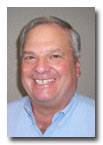This week, the Rupp Report takes a look at one of the major German suppliers of tenters and other
finishing equipment – A. Monforts Textilmaschinen GmbH & Co. KG. The company is located in
Monchengladbach and some months ago, it became a member company of the Possehl Group. The Rupp
Report spoke to Klaus A. Heinrichs, vice president marketing for Monforts. Heinrichs expressed that
his company was very happy with the results of ITMA 2011 in Barcelona, Spain.
Too Many ITMAs …
As always, the first question was about the concept of ITMA, with an ITMA Europe every four
years and the Asian ITMA every two years. His answer was quite different from the other interviewed
people: “If we consider ITMA to be an innovative show, one in Europe and one in Asia every three
years would be enough. I’m sure with this concept the Asian ITMA would be valued much more highly.
With the current situation, we have quite an inflation of Asian textile machinery exhibitions, and
not only the ones in China.”
… But Very Good Response
The questions about the origin of the visitors were congruent with answers from
other interviewed exhibitors: Most people came from India, Pakistan and Turkey. South America was
very strong with many Brazilian visitors; followed by Germany and Spain.”
The visitor frequency was very good indeed for us,” Heinrichs said, “and the quality of the
people was absolutely outstanding. We welcomed only decision makers, and by September 27, we
already had 20-percent more visitors than in Munich four years ago. Indeed, we are very happy with
this event and are looking forward to the following months.”
With the increasing importance of industrial fabrics, the European market is still important
for Monforts: “Yes, in spite of the fact that today, technical textiles are also produced in
low-wage countries, the concept and decision-making still takes place in Europe,” Heinrichs added.
“But of course, the Asian market today is much more important in terms of bigger volumes. However,
I believe that Europe is still important for high-tech machinery and products.”
The current economic situation is not that much distorting the business of Monforts. “The
only difference we see today is the fact that the investments are a bit smaller than last year,”
Heinrichs commented.
New Products
The response to the exhibits is somewhat the most important criterion for a
successful show: “The response to our two main new exhibits was great,” Heinrichs said. There is,
on the one hand, the Montex 8000 tenter. Monforts reports the new tenter includes a number of new
features and options that are particularly suitable for knitted fabrics, nonwovens and other
industrial fabrics applications. The European-built tenter features a new heat recovery module
incorporating a fully automatic system for its integrated heat recovery system; a reduced distance
at the infeed for knitted fabrics; a new heavy-duty vertical chain; new rotating disc type
“fluff-sieves” and a vacuum system for efficient cleaning. Furthermore, it features an improved
visualization for the company’s Teleservice remote control facility; as well as two parallel
integrated exhaust ducts in each chamber. A new heat recovery module Eco booster HRC with a fully
automatic cleaning system was also presented, replacing earlier modules. The new one provides
availability on a constant level, a reduced downtime and no reduction in the tenters performance
due to contaminated filters.
On the other hand, the Matex Eco-applicator was a tremendous success too, Heinrichs
mentioned. According to Monforts, a new, improved soft coating solution provides a significant
energy savings with reduced drying times. In addition to that, it also can eliminate the need for a
conventional wet-on-wet padder. The new process uses trough and roller techniques and applies just
the required amount of liquid/coating to the fabric via contact with the roller.
“The whole industry is in search of sustainable production, whatever that may be. The main
issue is to save time and energy, and reduce wastewater,” Heinrichs added. “So the success of these
exhibits is just the outcome and consequence of a strong market need.”
Positive And Confirmed Situation
How does Monforts interpret the current market situation? “Well,” said Heinrichs,
“we feel not that much influence from the stock markets. We are optimistic, having great
opportunities in Latin America for our systems working in traditional markets, but also for
technical textiles in Europe — mainly in Germany, Austria and Switzerland.”
Last week, the Rupp Report had the chance to see Heinrichs again and ask him if he can
confirm the positive statements he made at ITMA. “By all means,” he said, “the impressions from
ITMA were confirmed. Virtually all discussions with customers at ITMA are becoming serious
projects. Our products are absolutely fulfilling the market demands. These positive feedbacks
require much more customer testing on the new machinery in our laboratory to prove that these new
machines produce the same finish results on an industrial 1:1 scale. But this is no problem at all.
“On the other hand, we also see a higher demand for upgrade packages of existing machines. We
prepared different upgrade kits for older machines, and with these tools, the customers have the
possibility to get a much higher production with less investment,” Heinrichs said.
Outlook
“Our portfolio is pinpointed to today’s requirements regarding sustainable production in
general; and reduced energy, time and wastewater in particular. The current positive trend for our
machines is reflecting this argument. For 2012, we expect a similar positive year,” Heinrichs
mentioned.
Yes, of course, he added, Monforts will be in Shanghai next June for ITMA Asia + CITME 2012,
and probably in Milan for ITMA 2015.
December 13, 2011






